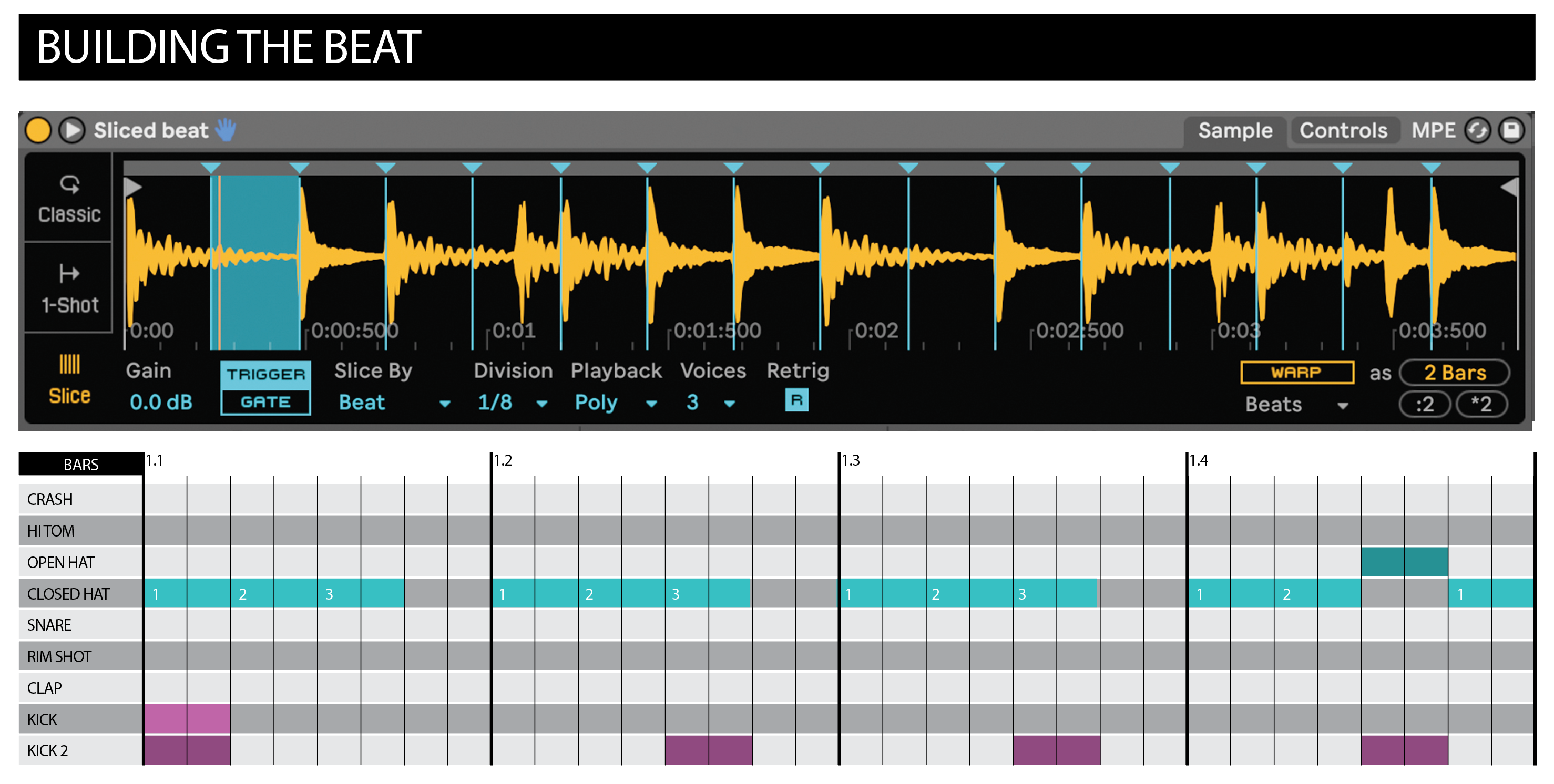Beat Building: how to make a Big Beat beat
Learn how to build big Big Beat beats in our Beat Building series of tutorials. Now that's a tongue twister!

In our Beat Building series, we're showing you how to produce beats, grooves and drum patterns in a variety of styles and genres, touching on various eras of production, to help you understand the key rhythmic elements behind many of today’s biggest tracks.
Big beat music got mainstream in the late 1990s/early 2000s, with artists like The Chemical Brothers, Junkie XL, The Crystal Method, and of course Fatboy Slim – the genre is even named after a Brighton club night that he used to run.
Big beat producers made full use of contemporary sampling technology, with breaks and other loops (often contained within an Akai S-series hardware sampler) playing alongside sampled vocals, and programmed beats, such as might be created on a Roland TR-909.
Sample selection was everything, especially with the all-important breaks or beats that were the foundations of these new productions
As with hip-hop music previously, sample selection was everything, especially with the all-important breaks or beats that were the foundations of these new productions, and no vinyl stone was left unturned in the search, sometimes using quite unexpected material – see Fatboy Slim’s use of Ashes The Rain And I from 1970’s album James Gang Rides Again, for his hit Right Here, Right Now.
The James Gang is Joe Walsh pre-Eagles, once again showing us that classic rock has some very usable intros and breaks – the most obvious examples must be Aerosmith’s Walk This Way, or Billy Squier’s The Big Beat… hmm, wonder if that’s where Fatboy Slim got his club name from?
Building the beat...

First thing you’ll need is a sampled DRUM BREAK; we’ve faked one here, using the Session Dry Kit in Ableton Live, assuming that an acoustic type beat would be the best source material. You can use one of the many breaks available from SampleRadar absolutely free.
We won’t convert it to MIDI because we want to keep the flavour of the original beat, but we are slicing it in our software sampler, which is how such things were done back in the day (enable poly mode so it’ll play more than one drum hit at a time). Most soft samplers give you the option of slicing manually or automatically; you’ll need to work according to your chosen beat.
Get the MusicRadar Newsletter
Want all the hottest music and gear news, reviews, deals, features and more, direct to your inbox? Sign up here.
We’ve kept most of the original pattern, but added a couple of kick drum hits at the end of the two-bar loop. We’re using a 135bpm tempo, right in the ballpark for this genre. Then it’s MIDI time. We’ve used a 909 KIT to add a beat and percussion to beef up the sample and add contrast.
If you want a really heavy ‘1’, you could use a synth kick, so you can easily adjust the decay and emphasise that first beat in the pattern. We also have a hi-hat loop, not seen here, which is useful for pacy little breakdowns. These parts can be simple – sometimes all you need is that first kick in the bar, and a snare.
We don’t worry about velocity or groove on the electronic beats, the sample conveys all of that. If it comes from vinyl, the original sample has ‘personality’ already, and we can keep the electronic beat clean-ish (we’ll add a tape simulator/
compressor plugin to the master track, to bind things together).
After building the drum pattern, we’ll add an acid-style bassline with some automation to keep it evolving, then maybe a guitar part. Finally effects, in the form of delays, reverbs, and the all-important tape sim/compression.
Get started on building a Big Beat beat with these free samples:


Future Music is the number one magazine for today's producers. Packed with technique and technology we'll help you make great new music. All-access artist interviews, in-depth gear reviews, essential production tutorials and much more. Every marvellous monthly edition features reliable reviews of the latest and greatest hardware and software technology and techniques, unparalleled advice, in-depth interviews, sensational free samples and so much more to improve the experience and outcome of your music-making.










